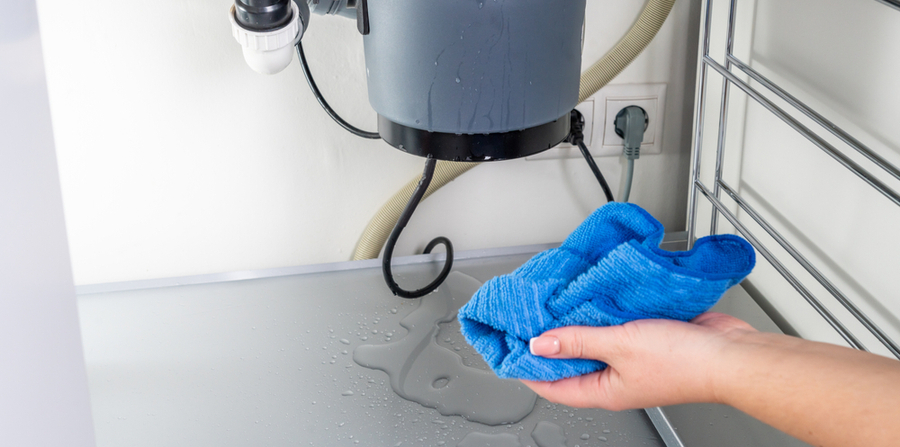Helpful Techniques for Repairing a Dripping Garbage Disposal
Helpful Techniques for Repairing a Dripping Garbage Disposal
Blog Article
This great article following next on the subject of Why Is My Garbage Disposal Leaking From the Bottom? is rather insightful. You should read it.

Garbage disposals are necessary kitchen area devices that assist in throwing away food waste efficiently. Nevertheless, a dripping garbage disposal can be an aggravating and untidy problem to manage. Luckily, several leaks can be taken care of quickly with a couple of easy actions. In this article, we will discuss exactly how to repair a leaking waste disposal unit successfully.
Intro
Garbage disposals are mounted under kitchen sinks and are created to shred food waste right into smaller sized items, enabling it to pass through the pipes system easily. While these tools are normally trustworthy, leakages can take place gradually because of wear and tear, loose links, or damage to the device.
Typical Reasons For Leaks in Waste Disposals
Worn Seals and Gaskets
Seals and gaskets play a critical function in avoiding water from leaking out of the garbage disposal. In time, these parts can deteriorate, leading to leakages around the disposal device.
Loose Connections
The connections in between the waste disposal unit and the plumbing system can become loose with time, creating water to leak out during procedure.
Fractures or Openings in the Disposal System
Physical damage to the garbage disposal, such as splits or openings in the real estate, can additionally cause leakages.
Recognizing the Resource of the Leakage
Before attempting to repair a leaking garbage disposal, it is necessary to recognize the resource of the leak. This can commonly be done via visual inspection or by performing simple examinations.
Visual Evaluation
Inspect the garbage disposal unit carefully for any kind of signs of water leak. Pay close attention to locations around seals, gaskets, and link factors.
Checking for Leakages
One way to examine for leakages is by running water with the disposal system and looking for any visible indicators of leakage.
Tools and Products Needed for Taking Care Of a Dripping Waste Disposal Unit
Before starting the repair work procedure, gather the necessary tools and materials, consisting of a screwdriver, flexible wrench, plumbing professional's putty, substitute seals or gaskets, and epoxy or patching material for repairing fractures or openings.
Step-by-Step Overview to Fixing a Dripping Garbage Disposal
Shut off the Power
Before trying any fixings, make sure that the power to the garbage disposal unit is shut off to stop the risk of electric shock.
Find the Leak
Determine the exact place of the leak and establish the cause.
Tighten Links
Make use of a wrench to tighten any loose connections between the disposal system and the pipes system.
Change Seals or Gaskets
If the leak is because of used seals or gaskets, eliminate the old elements and replace them with new ones.
Patching Fractures or Holes
For cracks or openings in the disposal device, usage epoxy or a suitable patching product to seal the broken location.
Evaluating the Waste Disposal Unit After Repair
When the repair service is full, check the waste disposal unit by running water with it to ensure that the leak has been dealt with.
Preventive Maintenance Tips to Avoid Future Leakages
To stop future leakages, it is necessary to execute normal maintenance on your garbage disposal. This includes keeping it clean, preventing putting non-food items or tough things down the disposal, and regularly checking for leakages or other issues.
Verdict
In conclusion, taking care of a dripping garbage disposal is a fairly straightforward procedure that can be finished with standard tools and products. By adhering to the steps detailed in this short article and practicing precautionary upkeep, you can maintain your garbage disposal in good working problem and stay clear of costly fixings in the future.
What to Do About a Leaking Garbage Disposal
A leaking garbage disposal often goes unnoticed until you confront a sopping cabinet, a foul-smelling puddle, or an audible drip-drip-drip from the unit. The fix can be frustrating, too, because the leak can stem from a number of components in the system. Fortunately, with a little sleuthing, you can zero in on the leak and—depending on the exact location—stop the icky oozing and repair the component that caused it. Worst case scenario, if it turns out that the garbage disposal must be replaced, installing a new one is a reasonable do-it-yourself task for those with basic plumbing skills. Read on to keep the cash you’d otherwise hand over to a pro.
Prepare to find the leak
Prior to testing the garbage disposal for leaks, unplug it at the wall outlet and turn off the power from the breaker box to prevent electrical shock. Then insert a watertight sink stopper into your sink drain and wipe the unit dry with a clean cloth. In any handy container, mix a few drops of food coloring into a few cups of water, and pour the dyed water onto the sink stopper to help you locate the leak.
Investigate the source
the top, where the disposal meets the sink drain the side, where the dishwasher hose or main drain pipe connects to the disposal or the bottom of the unit Inspect each of these locations while gliding a light-colored rag over the unit; the dyed water will readily show on the rag and reveal the location of the leak. If a leak isn’t immediately apparent, remove the sink stopper and pour a few more cups of dyed water down the sink drain, then check for leaks again. Leaks near the top of the unit are more likely to show themselves while the sink is plugged, while side and bottom leaks are more noticeable while the sink is unplugged.
The metal sink flange that sits directly inside the sink drain is typically sealed around the top with plumber’s putty (a clay-like sealant) and then secured from under the sink with bolts. If the plumber’s putty deteriorates, or the bolts loosen, the flange can no longer form a watertight seal between the sink drain and the disposal—which could cause a leak at the top of the unit.
To reseal the leaky flange, you must first detach the garbage disposal. Start by loosening the screws securing the main drain pipe to the disposal, then loosen the screws in the metal clamp securing the dishwasher hose to the disposal and detach the drain pipe and dishwasher hose from the disposal. Loosen the screws in the mounting ring that connects the disposal to the metal mounting assembly beneath the sink, then pull down the disposal and carefully set it on a clean, dry surface. Loosen the bolts in the mounting assembly with a wrench, then pull down the mounting assembly and set it near the disposal.

I found that blog posting on Why Is when doing a search on the web. Sharing is good. Who knows, you will be doing someone a favor. I value reading our article about The Handy Guide To Fixing Your Garbage Disposal Leaking.
Book-Now Report this page